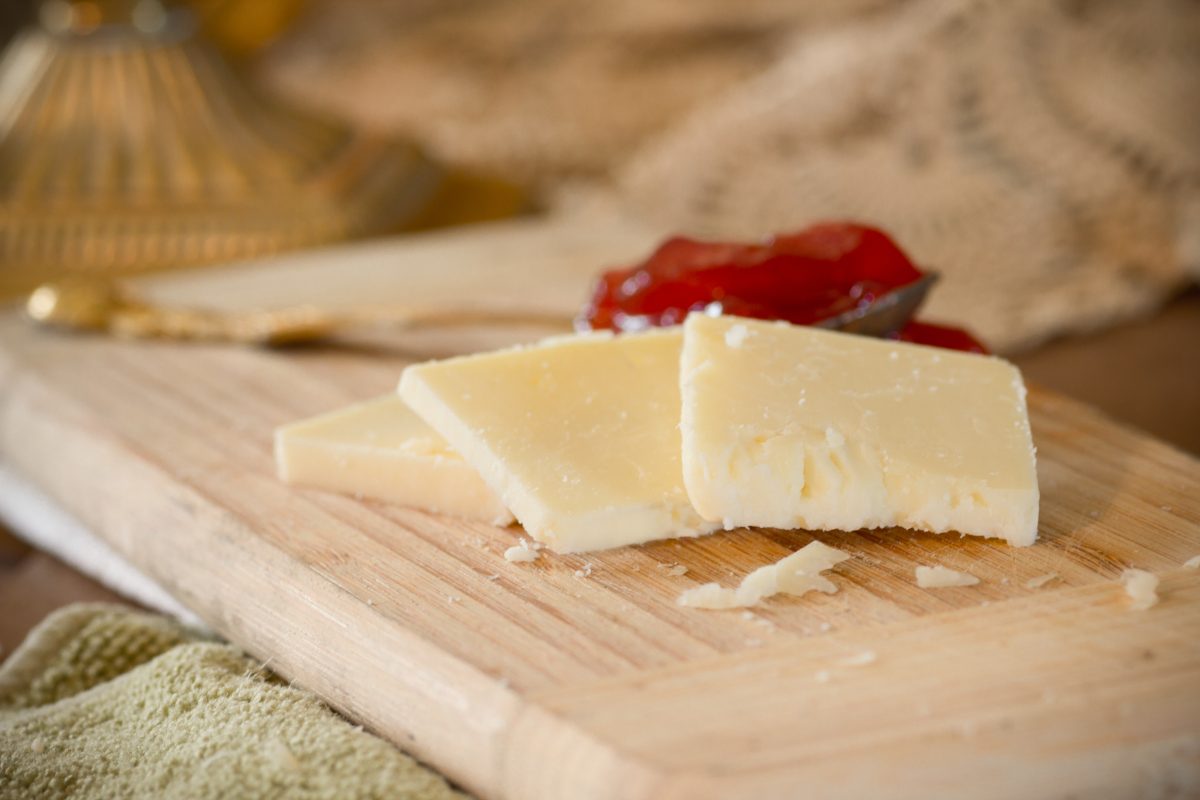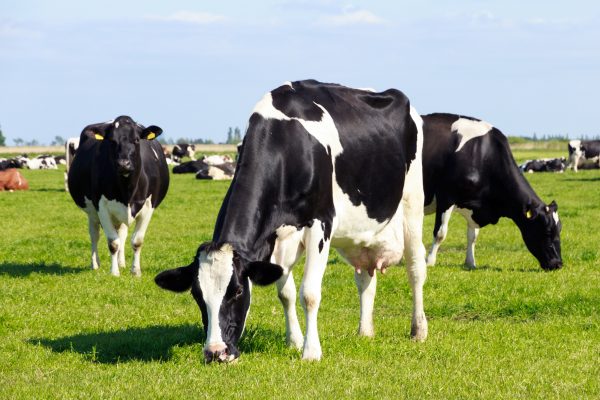
Wisconsin is known for cheesemaking and uses 90% of its milk for this purpose. This explains why milk quality determines a dairy farmer’s sales revenue more than milk quantity. Credit: Littleny|Dreamstime.com.
As the top cheese-producing state in the country, Wisconsin is home to about one million dairy cows. But the male contribution to the next generation’s genetics comes from a national pool of fewer than 200 bulls that are used by more than 80% of U.S. farms for artificial insemination.
Associate professor Sheldon (Xiaodong) Du recently studied whether breeding investments improve a dairy farm’s future productivity by boosting milk sales revenue—and if so, how long it takes for that investment to pay off. This has long been an open question, says Du. “It is difficult to estimate the genetic contribution to farm productivity because economists do not have direct access to a dairy farmer’s bull choices,” he explains. “This is easier for crop farmers because we know the genetic makeup of the seeds they buy and can measure the crop yield resulting from those purchases.”
To fill this knowledge gap, Du teamed up with two colleagues: Jared Hutchins (AAE PhD’20), an assistant professor of agricultural and consumer economics at the University of Illinois at Urbana-Champaign, and Yating Gong, a current AAE PhD student.
The researchers first analyzed a dataset of 372 observations collected by the UW-Madison Center for Dairy Profitability from 60 small- and medium-scale Wisconsin dairy farms (50-500 cows per farm). From 2008 to 2018, the average herd size grew by 64% (from 177 to 290) and the average milk revenue by 80% (from $74 million to $133).
Economic productivity models estimate output as a function of input. Here, the input variables included the cost of labor, feed, fuel and utilities; the value of owned buildings and equipment; and the number of cows. Of particular interest were the expenditures for technician breeding services and bull semen. According to the researchers, the average breeding cost of $90 per cow is an indirect measure of a bull’s genetic quality and an investment in future productivity through genetic improvement.
The output variable was sales revenue adjusted for milk prices. The price of milk is determined by its quantity and quality, measured by its percent of butterfat, percent of protein and somatic cell count (SCC). SCC measures the number of immune cells, with higher counts indicating potential mastitis (inflammation of the mammary gland) and reduced cow health, resulting in lower milk quality. Since 90% of Wisconsin milk is used for cheese, the fat and protein measures are the main criteria by which farmers select bulls because they determine the quality and price of cheese, says Du.
The team also modeled productivity with a second dataset that provided a more direct genetic quality measure. It combined the farm-level CDP data with bull-level evaluation data (2012-2018) from the Wisconsin Dairy Herd Improvement Association. Since the number of overlapping farms was limited, the combined dataset was much smaller (88 observations) but allowed the researchers to describe each bull’s genetic quality with two indices: a production index based on the yield of milk, fat and protein in the bull’s daughters and a health index based on SCC and daughter pregnancy rate. More desirable genetic traits correspond to higher scores on both indices.

The results showed that investments in genetic improvement, whether measured directly or indirectly, improved farm productivity three years later. This time lag makes sense because cows give birth 10 months after breeding. It takes 12 months before the new calves are ready for breeding and another 10 months before they start to produce milk, for a total of about three years.
The researchers also found that the link between input and output variables was much weaker when milk quality measures were excluded from the productivity model. For Du, this is one of the study’s main results. “Quality matters more than quantity in a state like Wisconsin, where the vast majority of milk is used to produce cheese,” he says. In California, for example, most milk is sold in fluid form. The fact that the price of the final product, rather than the milk it is derived from, determines sales revenue is a unique feature of the dairy industry, says Du.
“This is the first quantitative evidence, to our knowledge, that breeding investments improve the productivity of Wisconsin dairy farms, and that it takes about three years for that investment to pay off,” says Du. “It answers an important question that researchers and farmers had been curious about for years.”